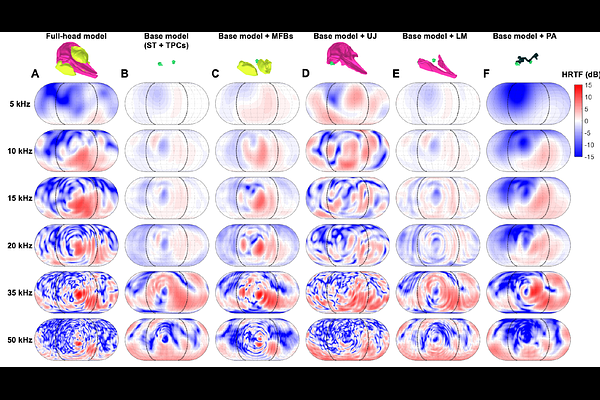Head-related transfer function predictions reveal dominant sound transmission mechanisms in a dolphin head

Head-related transfer function predictions reveal dominant sound transmission mechanisms in a dolphin head
Cheong, Y.; Ruesch, A.; Schalles, M.; Kainerstorfer, J.; Shinn-Cunningham, B. G.; Lee, W.-J.
AbstractToothed whales possess specialized anatomical structures in the head, including thin, excavated lower mandible embedded in mandibular fat bodies, complex skull morphology fused with the upper jaw, and extensive air spaces surrounding the middle ears and beneath the skull. In this study, we use finite element modeling to investigate how these structures influence the transmission of water-borne sounds to the ears. The models are based on volumetric representations derived from computed tomography (CT) scans of a live bottlenose dolphin (Tursiops truncatus). We iteratively modify the anatomical structures included in the model and use the predicted head-related transfer functions (HRTFs) as a proxy for comparison. Our results show that the mandibular fat bodies, which support a lower sound speed than the surrounding tissues, significantly enhance the forward receiving directionality at echolocation frequencies through refraction, in a manner similar to the melon in shaping the dolphins\' highly directional transmission beams. Additionally, we show that, in the frequencies encompassing dolphin communication signals, the air volumes help block the otherwise complex sound transmission through the bones. These findings highlight convergent evolutionary solutions in toothed whale anatomy to create strong directionality in both sound emission and reception governed by the same physical principles.